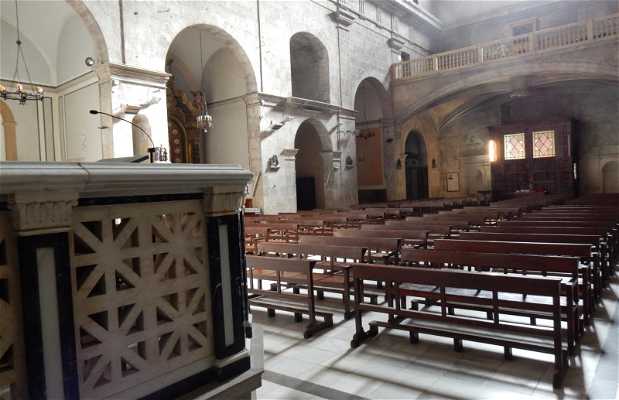PierLuigi Galliano
The parish church of St. Julien to LArbo
La chiesa parrocchiale di San Julien a L’Arboç
La Chiesa parrocchiale dedicata a San Julien la troviamo al centro della cittadina di L’Arboç, nella provincia di Tarragona in Spagna.
La vediamo spuntare dall’alto della collina dove si trova il centro abitato e per trovare l’ingresso principale bisogna aggirare un po’ le alte mura che la circoscrivono.
E’ un edificio religioso con architettura barocca e la sua storia risale al 991 confermata dal ritrovamento di un documento nella Cattedrale di Barcellona, sui resti di un tempio antico.
Ufficialmente venne consacrata intorno al 1100, quando Ramon Berenguer IV regnava sovrano.
Ma la sua vera costruzione avvenne agli inizi del XVI secolo, seriamente danneggiata nei secoli successivi da incendi e guerre. La sua ricostruzione venne seguita e portata avanti con grande orgoglio da tutte le famiglie del villaggio.
Davanti alla facciata principale sopra il portale troviamo un rosone enorme, con ai lati due torri di 28 metri. Il portale ha quattro colonne che custodiscono le statue di quattro santi.
Appena varcato l’ingresso il nostro sguardo viene assorbito completamente dall’immenso spazio che occupa la chiesa, enorme e smisurato, da farci rimanere frastornati. Al suo interno osserviamo la struttura, fatta di un’unica navata, con sei cappelle laterali per parte.
I pavimenti sono tutti in marmo bianco e un’insolito baldacchino posto sopra l’altare maggiore, in marmo bianco e nero, preserva la statua di San Julien. Al suo fianco la Cappella dei Dolori, con una statua della Pietà.
The parish church dedicated to St. Julien is found in the center of LArbo town, in the province of Tarragona in Spain. We see her appear from above the hill where the town and to find the main entrance you have to get around a bit high walls that circumscribe. And a religious building with Baroque architecture and its history dates back to 991 confirmed by the discovery of a document in the Cathedral of Barcelona, on the ruins of an ancient temple. Officially it was consecrated in 1100, when Ramon Berenguer IV reigned supreme. But its actual construction took place in the early sixteenth century, seriously damaged in later centuries by fires and wars. Its reconstruction was followed and carried forward with great pride to all the families of the village. In front of the main facade above the door we find a huge rose window, flanked by two towers of 28 meters. The portal has four columns that hold the statues of four saints. Just crossed the entrance our gaze is absorbed completely dallimmenso space that occupies the church, huge and bottomless, to keep us bewildered. Inside we look at the structure, made of ununica nave with six side chapels on each side. The floors are all white marble and uninsolito canopy above laltare more, black and white marble, preserves the statue of St. Julien. At his side the Chapel of Sorrows, with a statue of Piet.



+6

